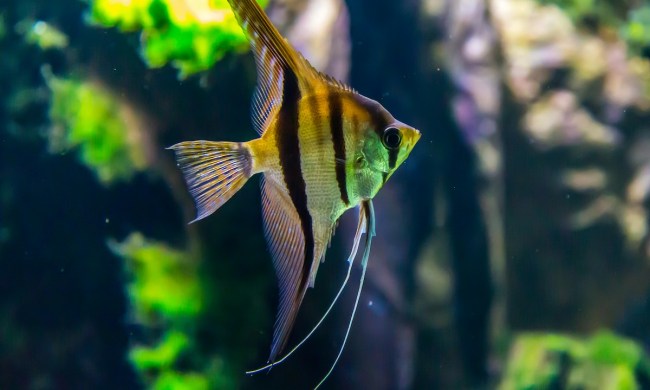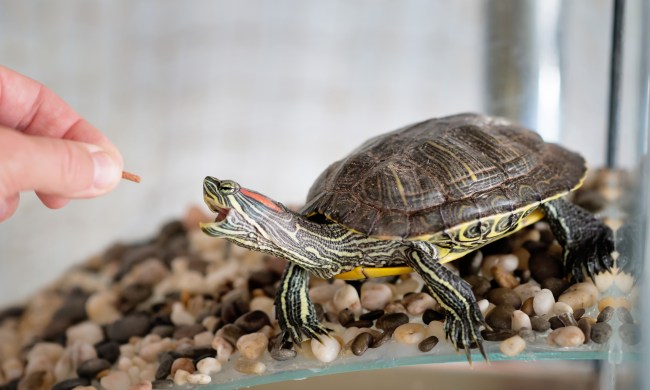If you’re familiar with Looney Tunes, you know the famous duo comprised of Tweety Bird and Sylvester the Cat. They were popular cartoon characters until recently, though they may have also helped spread the stereotype of a vindictive cat-and-bird relationship that we know and love today.
But can cats and birds live together? It’s only normal to speculate. While it seems like birds and cats could easily occupy different spaces and avoid each other’s presence, the reality of cat and bird households can look very different. You’ll want to know this about cats and pet birds living together and what you can do to make it as peaceful of an experience as possible for everyone involved.
Can birds and cats live together?

Even though it may seem like a not-so-smart idea to keep a pet bird and a pet cat in the same household, it’s the ideal situation for many animals to live with other furry or feathered friends. Many bird species remain in flocks in the wild, and they often feel a sense of connectedness and purpose when doing so. This explains why your chickens, lovebirds, and parrots also prefer your company (or another bird’s company) over none at all, though it can be hard to predict whether your bird will feel tolerant of your feline friend.
Felines have strong predatory instincts
One downside to consider before bringing home a bird when you already have a cat is that all cats have predatory instincts. In some cases, this could lead to chasing small creatures like lizards and birds, but it can often be channeled into more effective actions like scratching on a scratching post or pouncing on a cat toy. To keep your bird from becoming the object of play, make sure your cat has plenty of other opportunities to play and get exercise.
Feline bacteria can cause illness and infection
Anyone who has a cut or scratch knows just how easy it can be to get an infection. We often don’t know what’s happened until long after the initial injury, when we are finally prompted to go to the doctor after a wound refuses to heal. It can be such a pain!
When it comes to cats, there’s also specific saliva in their mouths that houses some bacteria, but getting this saliva into a wound (via a bite) can cause a whole world of complications. Humans can even be hospitalized from infections following cat bites, so it’s important to ensure your bird receives prompt medical treatment if they ever have an encounter with a cat that gets too close.
Bites from big birds can seriously injure a cat
Most of the time, cats are the predators that you would need them to be. However, many species of large birds could potentially injure a feline. Small cats and kittens don’t stand a chance against gigantic birds like eagles, hawks, and even giant storks, but the good news is that pet parents aren’t likely to encounter these birds on a daily basis. Most pet birds won’t grow to be large enough to do any damage to a cat besides pulling out a tuft of fur. If your feathered friend is a larger, exotic species, they may not be a good candidate for a feline roommate. If you choose to introduce them, proceed with caution.
If you live in a more rural area or are worried about your outdoor cat’s safety, you can always invest in an anti-predator spiky vest for your furry friend. The spines on the vest will ensure no talons, jaws, or claws ever touch your beloved pet!
How to keep a bird safe when living with a cat

Whether the cat or bird is the first resident of the home, it can be a big adjustment to introduce a new pet of another species. It should go without saying that you can’t jump straight into an introduction, so be sure to let them stay in separate rooms for at least a few days after your new pet comes home.
Introduce your pets with the cage in between them
Some cats and birds are never ready to meet one another, and that’s OK. One way you can test this, though, is to let your cat into the room while your bird is in their cage. Let your cat observe from afar and get closer at their own pace, though be sure to stay close by in case they react more aggressively than expected. If your bird seems scared at any point during this process, take a break and try again later.
Keep your bird in their cage when the cat is around
As a rule of thumb, your bird should stay in their cage whenever your cat is roaming around the room. When you’re ready to let your feathered friend out, make sure your cat is enclosed in another room. If your cat can stay relaxed and disinterested when right next to your bird’s cage, you may be able to consider an introduction without bars between them, but be aware that there is always a risk with face-to-face interactions.
Invest in a high-quality birdcage
A birdcage is pointless if it doesn’t protect your pet bird from common dangers, including a cat’s swiping paws. The cage you choose should have no spaces wide enough for a paw to fit through and no space wide enough for a bird to squeeze through. It should be big enough for your bird to have plenty of space to move around and flap their wings, but the specifics depend on your bird’s species, size, and individual needs.
Never leave them together unsupervised
This may sound obvious, but cats and birds should never be left alone together. If they’re in the same room, stay with them. Even if you trust both of your pets, you simply never know when instinct and temptation may take over.
Cats and birds may be on opposite ends of the food chain, but many pets are capable of coexisting in peace, including these unlikely friends. Please use caution and care when letting these animals interact, and always do what’s best for you and your animals. With a little mindfulness and patience, even cats and birds can become friends!




